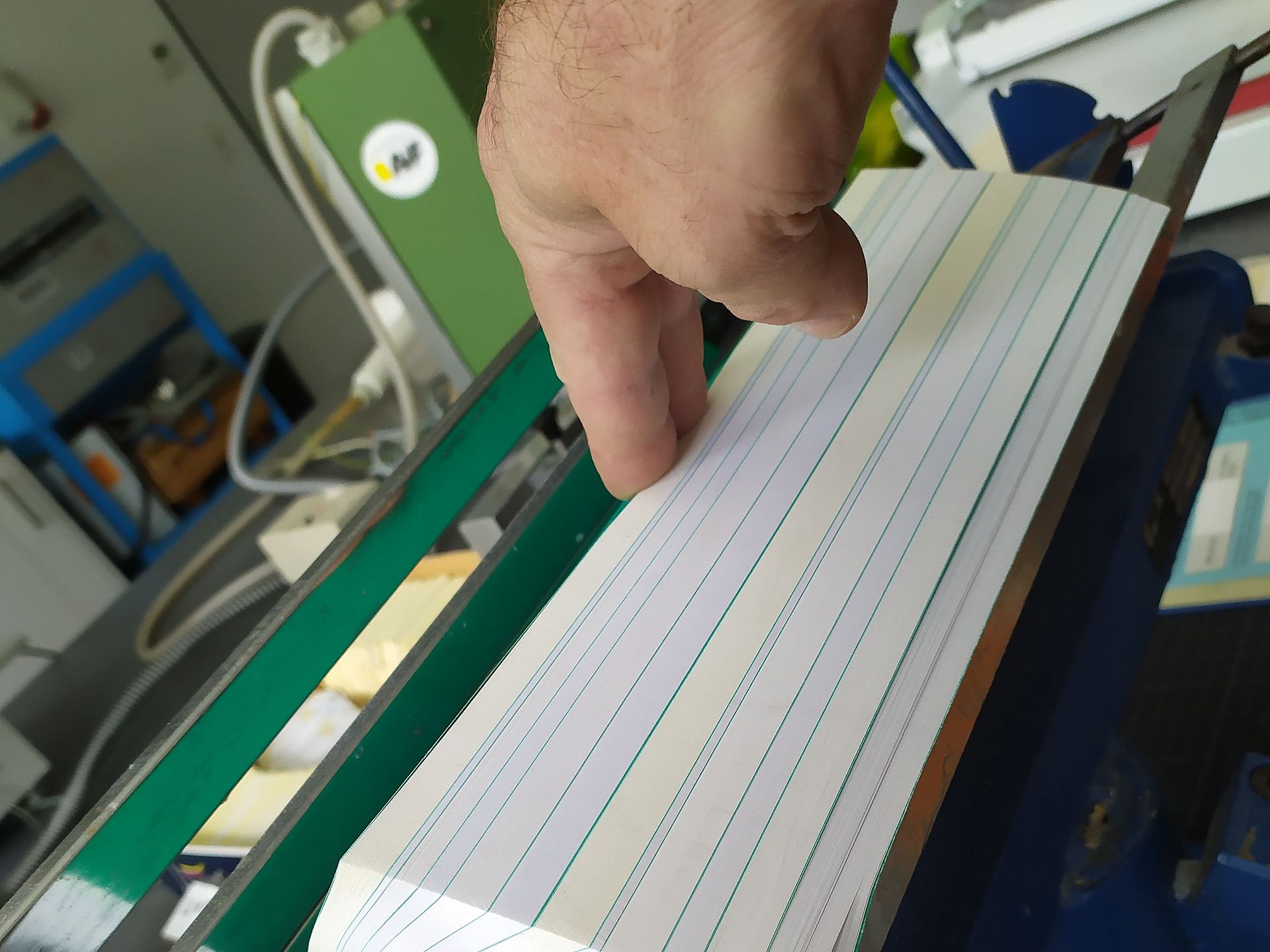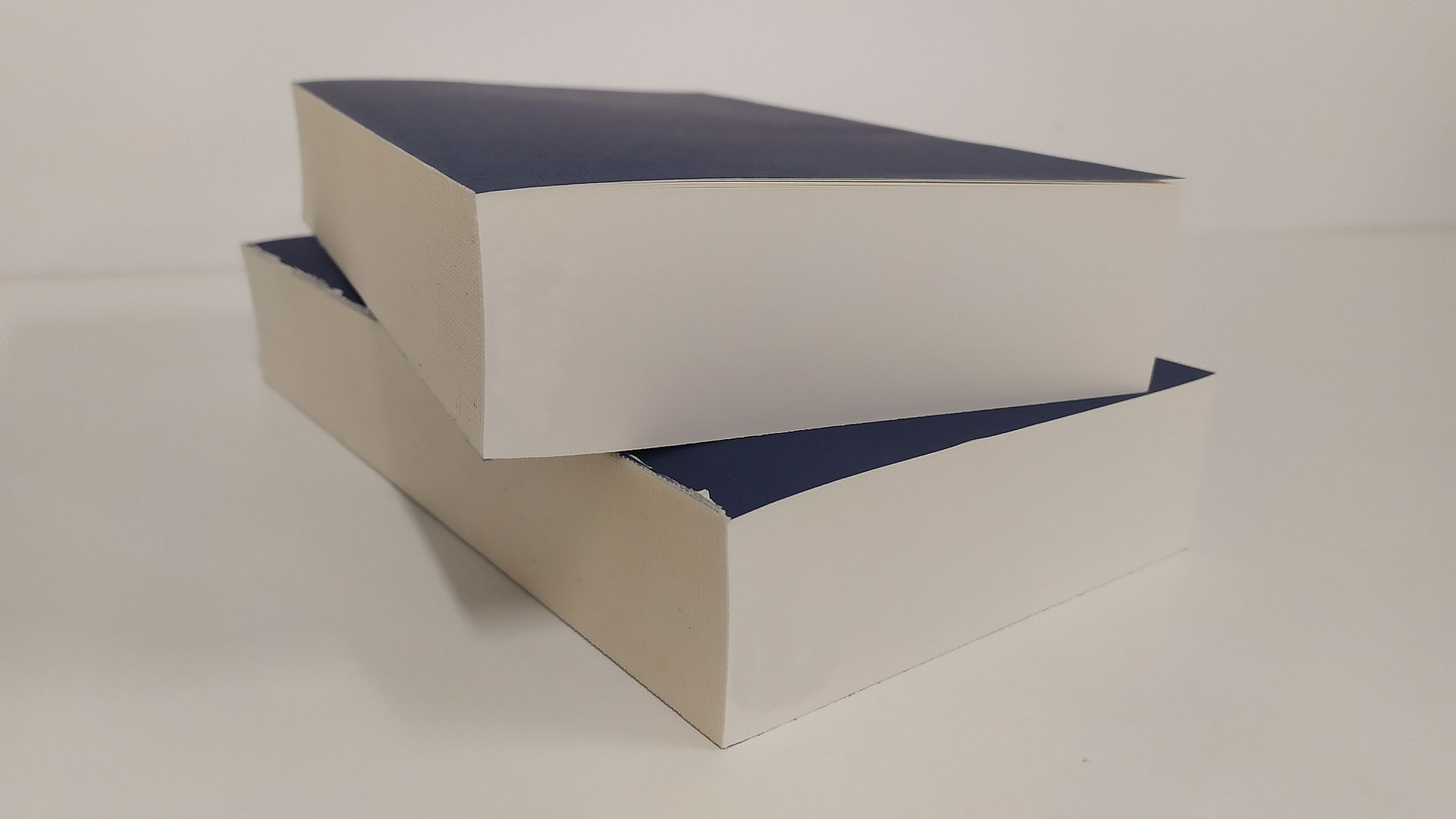Topic of your interest
In book production, high-speed inkjet printing (HSI printing) is the most important digital printing process and perfect binding the most common binding process. HSI printing brings new types of uncoated paper into the bookbinding industry. These papers must be reliably evaluated for their perfect binding capability in order to make technically and economically optimal decisions for processing.
Solution steps
In the first step, the test papers are characterized by means of selected paper tests. From these data, a mathematical prediction model is developed, which is compared with the results of the laboratory methods as well as craft and industrial perfect binding tests in an iterative process.
The laboratory methods deal with sheet edge roughening and sheet edge binding. It is investigated whether a statement on the achievable binding strength can already be made without sheet edge roughening (percentage binding strength). In the case of sheet edge roughening, the efficiency and the susceptibility to faults (e.g. sealing effect at the sheet edge) are to be evaluated. The laboratory method for sheet edge binding should provide a procedure that can be produced and tested as reproducibly as possible.
Another research approach addresses the specific process-related influences in HSI printing on the achievable perfect binding quality. The main factors to be investigated are moisture penetration into the paper, waiting times between printing and binding, and HSI-specific block formation.
Reached results
Compared to the typical properties of uncoated papers for offset printing, the paper characterization of the high-speed inkjet papers essentially shows, as expected, a significantly increased water absorption at the paper edge and surface. However, this does not have a significant effect on the perfect binding result. For example, no reduced adhesive film thicknesses due to rapid absorption of the water contained in the adhesive or reduced flatness were observed.
As part of extensive manual and industrial adhesive bonding tests with subsequent pull tests to determine the sheet tear strength, an influence variable analysis was carried out. This showed a high material influence with regard to the paper and the adhesive. Based on the technical data provided by the paper manufacturer, a relatively reliable assessment of the adhesive binding behavior can already be made. The most important paper parameters here are the thickness and the specific volume.
In the case of hand adhesive binding, the simplest variant of block gluing on the smooth-cut block spine without spine processing showed the best results in the pull test. The type of adhesive application has a certain influence, which is probably due to the film thickness and the contact pressure.
In industrial perfect binding, spine processing proves to be disadvantageous compared to smooth cutting on the guillotine - a finding that experience has shown cannot be easily transferred from the uncoated papers tested to coated papers. High-frequency drying tends to lead to increased bubble formation in the adhesive and also reduced values in the pull test.
The findings of the investigations were transferred into a prediction calculation using various methods of correlation analysis, which can be used by users to evaluate the suitability of an uncoated inkjet paper for perfect binding and to establish a more data-based production.



